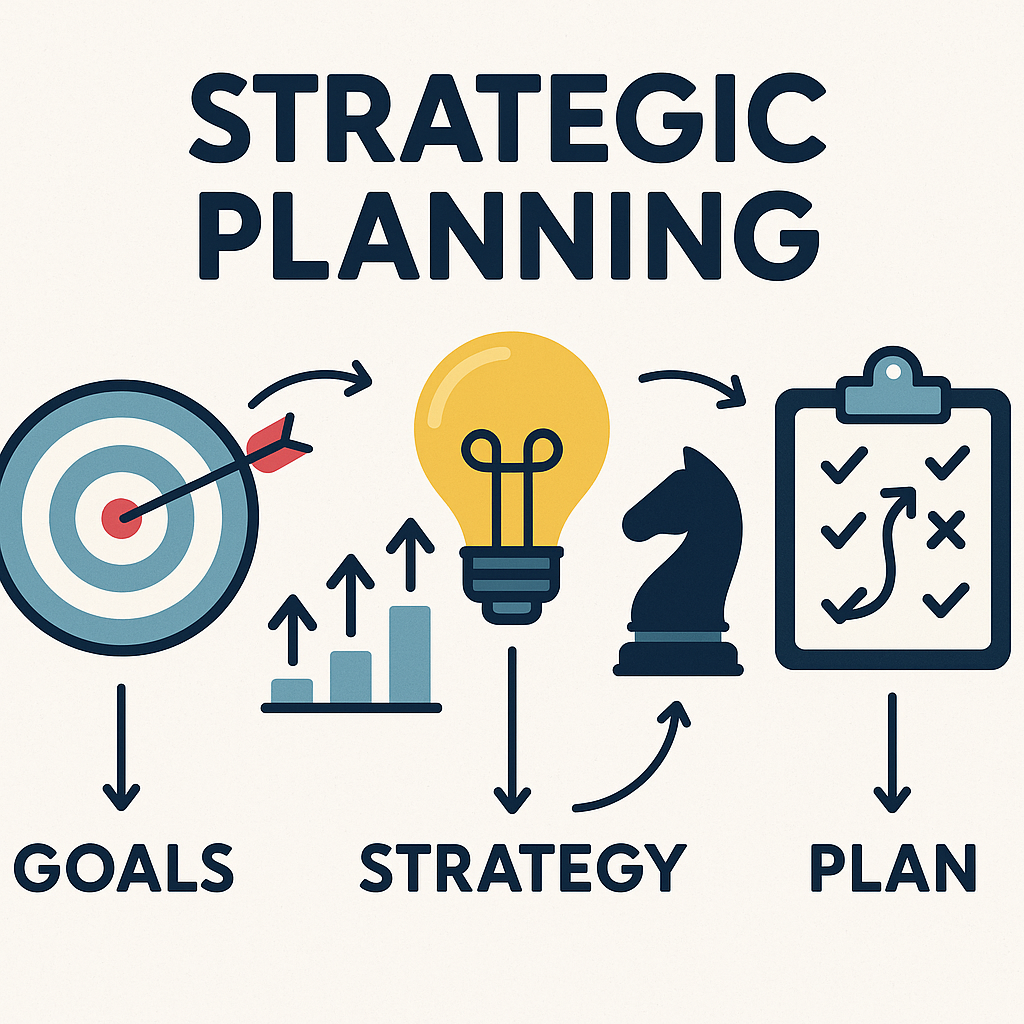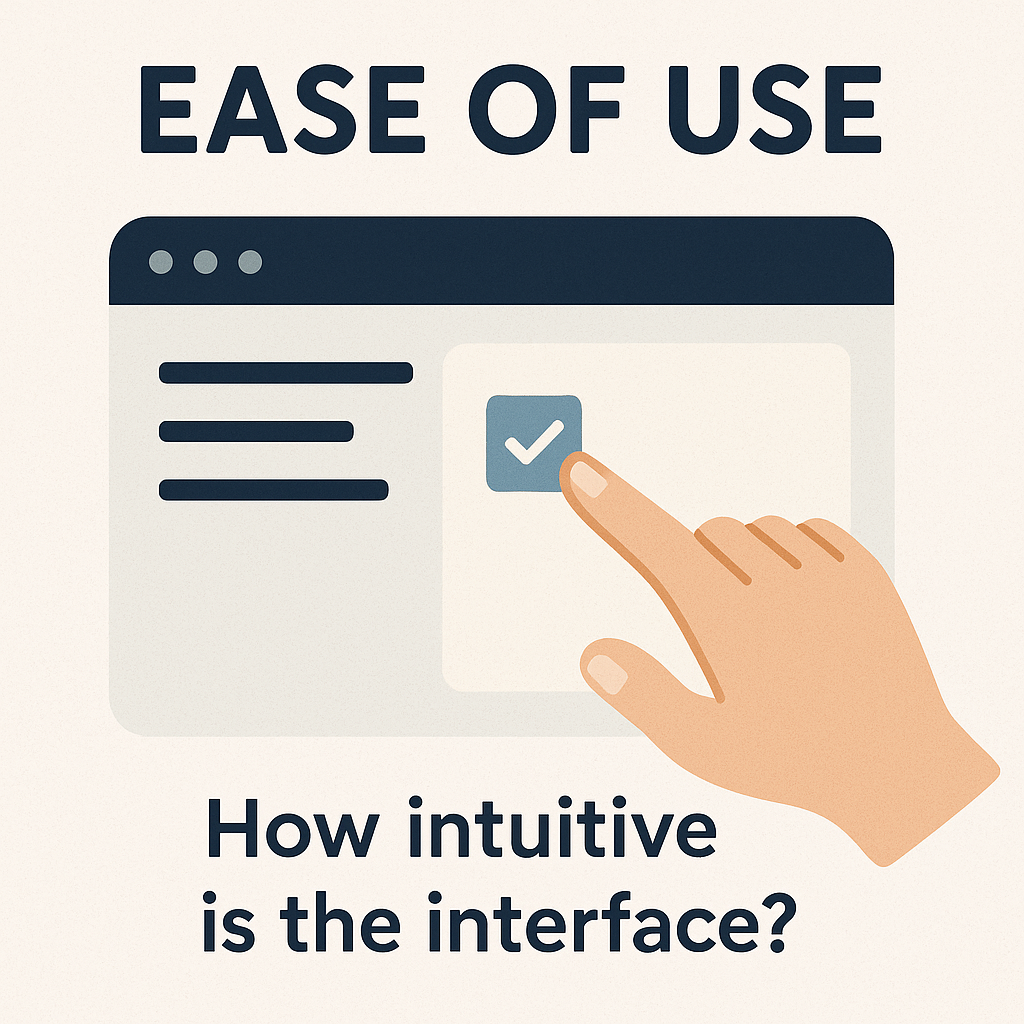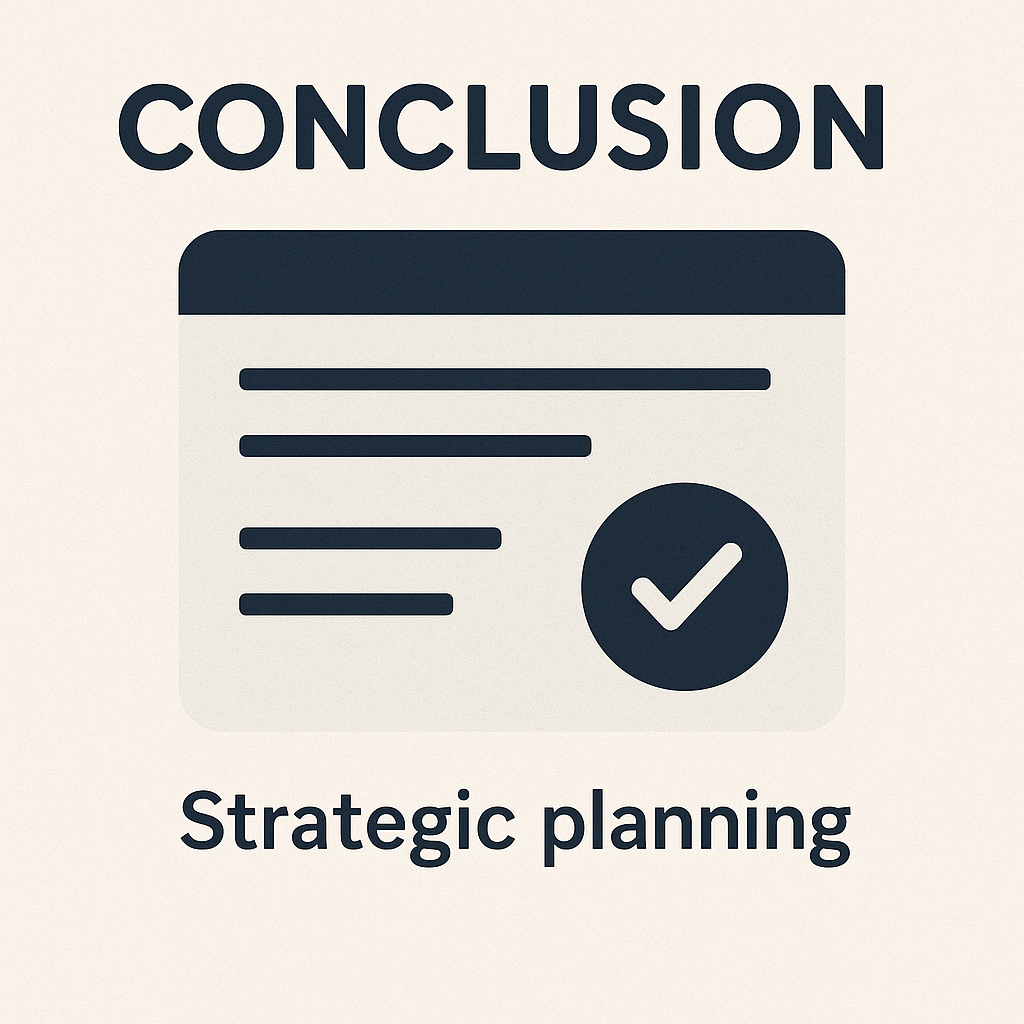Table of Contents
Strategic Planning: How to Set Your Business on the Path to
Introduction: strategic planning
Strategic planning lays the foundation for successful businesses. Without strategy, the work might not flourish, change, or realize its long-term goals. In this post, everything you need to know to grasp the concept of strategic planning from the definition to formulating your plan will be discussed- whether you are a first-time startup founder or an accomplished executive; material here will make it possible for an organization to exploit the fullest of its potential.
What is Strategic Planning?

Strategic planning means defining your business’s strategy, direction, and decision-making with regard to resource allocation in pursuit of that strategy. Of the definition, it involves setting goals, determining actions to achieve those goals, and outlining how resources will be used.
Strategic planning is the backbone of any successful business. Without a clear strategy, your work may not flourish, change, or realize its long-term goals. The post gives everything you need to know about conceptualization, from definition to formulating your own plan. Whether you have founded your own startup or you run the company as an experienced executive, material here will make possible being able to exploit the fullest of any organization.
Usability and Ease of Use in Strategic Planning Tools

While contemplating viable strategic planning tools for the business, issues of usability and user-friendliness should come into consideration. A complex-to-navigate tool that involves an exhausting training program causes delays in the consultative process. This section will highlight some user-friendly features of strategic planning tools and how they should be worthy considerations in the decision-making process.
Factors Making a Strategic Planning Tool User-Friendly
All users must find the strategic planning tool easy to use. Therefore, such a tool must be intuitive and almost without a learning curve; in fact, setting it up should have taken less time than the time it takes for a new user to start using it on the very first day-a bit of an exaggeration that the new user gets the concept right and gets going with the new strategic planning tool. Some vivid features of this attractiveness include:
Clear and Simple Interface: A clean and simple design lets users quickly find desired features. A perfect layout would make any task-from goal setting to tracking progress and collaborating with the team-as easy as pie.
Pre-Built Templates: Lots of tools do provide the option and have the capability of assisting one with templates for strategic planning, goal-setting, and project tracking. Such templates save a lot of time and energy when getting started. They also standardize your planning process to ensure reliability across your organization.
Drag-and-Drop Functionality: The drag-and-drop is a user-friendly feature that allows users to do one-click task arrangement, timeline changes, and responsibility assignment while saving time with plan updates that actually count for corporations.
Easy Onboarding: Best tools for strategic planning have very easy onboarding processes. Most will have some sort of tutorial session or guided set-up to get the user back on track with minimum frustration. So look for tools that allow for these in-app tips or step-by-step guidance.
Importance of Usability in Strategic Planning
The usability of a solution clearly impacts the effectiveness with which the organization will develop, manage, and implement their strategic plans. If the tool is not user-friendly, there will be a strong likelihood that the tool will not be used, resulting in missed deadlines, miscommunication, and a generally ineffective planning process. Alternatively, whenever a tool is simple to use, everybody can interact better with it, meaning better adoption rates by users, and the focus lies on strategy and not on the technical problems pertaining to the tool’s working.
The way the right tool augments decision-making is even incisive. Users can more intuitively access data and insights; thus, their insights are better qualified. Whether to see reports or check KPIs, usability plays the role of an agile enabler for the strategic plan or diverts it off course.
Check for Usability
A set of questions can be intended to assess usability relative to the strategic planning tool:
What is the setup process? Learning curves? Team almost focused on getting on board?
Features and Functionality in Strategic Planning Tools
Product features and functionality are essential to establishing a smooth and efficient planning framework within organizational goals. The right features enhance workflow and teamwork and provide insights in the advancement of any given strategy. This section discusses the defining features most critical to strategic planning and examines how they could influence good strategic planning.
Core Features of a Strategic Planning Tool
These are the “hard and soft” characteristics needed for generating strong and appropriate strategic plans:
Goal Setting and Tracking Any strategic plan must spell out goals that are quantifiable and measurable. Any good tool would allow for setting such goals, breaking them down into smaller actionable tasks, and keeping track of the attainment along time. Look for such features as deadlines, assigned individual persons, and completion tracking.
SWOT-analysis: Strengths, weaknesses, opportunities, and threats (SWOT) are very focused analytical measures to assess both the internal and external environment of your organization. Many strategic planning tools include such built-in-trust templates that help you structure your business landscape evaluation regarding the SWOT area. This is vital for arriving at the keys to be improved, as well as potential growth opportunities.
Collaboration And Communication Tools Any successful strategy will depend on formulating an effective communication and collaboration. The strategic planning tool must enable team members to share, collaborate on documents, share ideas, and have seamless communication moving forward within a particular tool. Associated with comment threads, task assignments, notifications should facilitate smooth discussion.
Action Plan And Task Management After formalizing your goals, now you have to translate them into smaller, manageable portions. Task management functionality: You add a task, set deadlines, prioritize, and engage your team with the framework of the project. Some tools include a Gantt chart or Kanban board for better visualization of the assignment and progress.
Performance Dashboard And Reporting Now, the plan is of no value if you cannot measure it against the comparison point for its progress. Check for customizable dashboards and powerful features in reporting. The dashboard should track key performance indicators (KPIs), milestones, and provide real-time insights into the execution of your plan. These should enable performance reporting, detailing the measure of progress and indicating the areas requiring adjustments.
Financial Planning and Budgeting Well strategic planning is not possible without financial budgeting and allocation of resources towards the strategic actions. Thus, having financial planning tools for budget tracking, expense management, and resource allocation capabilities is, instead, a necessity so that the organization can meet the strategic actions budget-wise.
Integration with Other Tools Apart from integration, strategic planning tools should also integrate with o
Collaboration Features
Good strategic planning should include contributions from several stakeholders—from executives to department heads—and would even consider input by external consultants. This makes collaboration features a key factor in your choice of any strategic planning tool.
Why Collaboration Matters
Almost never do strategic plans work alone in an office or away from others. Even the best-planned strategy gets a sap from a lack of real-time communication, shared visibility, and feedback loops, no matter how much time is spent to draft it. One such tool with inbuilt collaborative features will help keep the team aligned, accountable, and be fast to hurried pace with the change in business conditions.
Key Collaboration Features to Look For
Real-Time Editing & Comments
Just like working in Google Docs, real-time editing lets several users contribute at once and drastically diminishes version control issues.
Task Assignment & Role-Based Access
Task assignment to specific team members provides very clear responsibility and accountability. Role-based permissions secure access to confidential components of the strategy.
Integrated Chat & Notifications
Built-in messaging and alerts ensure up-to-the-minute updates, deadlines, and changes remain not “lost in space.”
Shared Dashboards & Strategy Panels
Collaboration dashboards allow teams to track progress toward goals collaboratively while making data-informed decisions on the fly.
Version History and Change Logs
Keeping track of your changes over time is essential for determining which parts of your strategic planning worked and which didn’t.
Customization & Flexibility

The degree of customization and inflexibility is one of the most critical features when choosing a strategic planning tool. Each association has its unique set of pretensions, structures, and workflows, and thus, the strategic planning platform should acclimatize to their requirements and not the other way around.
A good result for strategic planning will allow you to
Knitter templates to fit your business model
Change timeframes, thing scales, and KPIs
produce custom fields, markers, or orders
figure dashboards according to the effects that count most to you
significance
Customization ensures that your strategic planning process glasses the precedence’s of your association. For the impact criteria may be important to a nonprofit, while for a tech incipiency the OKRs and rapid-fire replication cycles may come ahead. With a flexible platform, each platoon or department can work the way that stylish suits them while still staying aligned with the overarching strategy.
effects to Look For
As you suppose about tools or fabrics for strategic planning, consider
Is it easy to modify templates, or produce new bones
?
Can I customize thing types, reporting formats, timelines?
Can different brigades or departments set up their own views?
Does it supportmulti-level strategy( company-wide, departmental, and individual plans)?
Cases Where it’s Good
still, inflexibility is crucial, If you are leading a fast- growing platoon or working in a fleetly changing terrain. Strategic planning tools that bind you to stiff formats can hamper progress and creativity. largely customizable bones
, still, are there to support dexterity and growth as associations change.
Integration Capabilities
When looking for tools for strategic planning, integration capability should be something at the top of your checklist. A robust strategic planning platform, after all, does not operate in a vacuum but easily interconnects with the other systems existing in your organization.
Why Integration Matters
Most teams use a variety of software: project management tools, communication platforms, CRMs, accounting software, and data analytics tools. Without integrations, you risk working in separate silos, duplicating your suffering.
With these integrations in place, you will be able to:
Automatically synchronize your goals and updates from the likes of Asana, Jira, or Trello
Enter real-time performance data from analytics platforms such as Google Analytics or Tableau
Capture financial data from tools like QuickBooks or Xero to assess budget health
Connect with communications tools like Slack or Microsoft Teams for team updates
This would streamline the process of strategic planning while keeping your strategy aligned with everyday operations.
Key Integrations to Look For
While searching for a strategic planning tool, check their compatibility with:
Project management (Asana, ClickUp, Monday.com)
Collaboration tools (Slack, Microsoft Teams, Zoom)
Data & analytics (Google Analytics, Power BI, Tableau)
Financial software (QuickBooks, Xero, NetSuite)
Cloud storage (Google Drive, Dropbox, OneDrive)
CRM platforms (Salesforce, HubSpot, Zoho)
The more integrations, the more straightforward bringing strategy and execution together becomes.
Benefits of Strong Integration
Real-time insights: Pull in live data to your dashboards.
Less manual entry: Save time and reduce errors.
Aligned Teams: Everyone sees the same strategic goals across tools.
Faster decision-making: Centralized data for better overall analysis.
Data Visualization & Reporting
Strategic planning is not compilation of goals, but rather the monitoring of how the goal has been accomplished or measured, along with an intelligible outcome-oriented communication of results. Probably in such a case, line charts, histograms, and the reporting stepped in.
An effective application of strategic planning should afford reporting facilities and clear visual dashboards that decode complex data into understandable insights.
Why It Matters
Data is the backbone of strategic decision-making. However, when trends cloud performance in context, such visualizations may well be taken for granted. Such tools advance:
The efficiency of monitoring the success of strategic plans
Bottlenecks or sluggish performance detection
Result communication to stakeholders effectively and efficiently
Ability to make on-the-spot changes in strategy
Information so displayed assists for faster and smarter decision making within the organization from the top down.
Key Features
When looking for tools for strategic planning, check for these features:
Custom dashboards with real-time data updates
Bar, line, pie or other graphs showing KPIs
Heat maps to show trends or priority areas
Drill-down to get to the detail of data
Exportable reports (PDF, CSV, etc.) for Board or team meetings
Making Reporting Actionable
In fact, data visualization is to make your strategy actionable. This brand new invention allows the metrics to be tied right to strategic objectives and thus clearly shows the team members how their part drives towards those more considerable goals.
You could imagine, say, your marketing division seeing campaign performance tied right back into companywide growth objectives, or one where a product team could monitor feature delivery timelines against the objectives of innovation.
Scalability
As the organization evolves, the strategic planning process must evolve accordingly. A solid justification for evaluating planning tools and planning frameworks is their scalability. Whether you are a startup scaling quickly or an established enterprise going into new markets, your strategic planning system must support greater complexities without collapsing.
Why Scalability Is Important
What works for a small strategic planning team today might not serve a multi-departmental organization tomorrow. Scalability ensures that your planning process is kept effective, organized, and stayed-aligned as business changes.
Some key reasons why scalability matters:
Allows organizational growth without having to scrap the system
Handles multiple teams and departments, and levels of strategy
Maintains performance and usability even as data and users increase
Ensures enterprise-wide visibility and coordination
What You Should Ask
Some questions you could ask when rating a strategic planning tool or framework with respect to scalability:
Is it multi-user with several roles and unrestricted permissions?
Does it hold department-unifying cross-functional strategies?
Does it support enterprise-level analytics and reporting?
Can you control multiple business units, locations, or lines of products?
The perfect platform grows with you, supporting you at 10 employees or 10,000.
Perfect Use Case
Startups: Small features for strategic planning, then grow.
Midsized firms: Work with multiple departments and initiatives.
Enterprises: Manage complex layered strategies around the globe.
Scalable tools ensure that your strategic planning process does not need to be rebuilt every time your organization achieves a growth milestone.
Pricing & Plans
Pricing is usually one of the most important considerations in selecting a strategic planning tool, especially for small businesses or nonprofit organizations that have very few dollars to spend. The best tools generally provide effective real cost benefits that scale with functionality to a small plan, with scaling plans for larger organizations.
The Common Price Models
The majority of strategic planning platforms offer at least all or part of the following pricing models:
Free or Freemium Plan
For small teams or use for trial purposes, this plan is limited to minimal users with very basic features.
Tiered Pricing
Paid plans are often based on the number of users, features, or integrations. More features can then be added to the plan as you scale.
Enterprise Pricing
These are plans specifically suited for large organizations with complicated requirements. These plans usually include proprietary features, advanced security, and dedicated support.
Considerations When Evaluating Plans
User Number
Some tools charge organza alone, while others are aggregate for the entire teams.
Feature Access
Which features at what price levels the other pricing tier includes—especially integrators, report tools, and collaborational features.
Scalability
Will require you to change plans whenever the company expands; can the plan scale with your team.
Hidden Costs
Watch out for exorbitant kind of membership fees related to onboarding, integrations, storage or custom report productions.
Free Trial or Demo
Take advantage of free trials obtainable through many platforms before committing yourself.
Value over Cost
The cheapest tool isn’t always the best tool. Value matters more than price when it comes to strategic planning. It pays for itself in saved effort and results produced if a tool allows your team to align, execute, and measure your strategy effectively.
Pros and Cons of Strategic Planning
✔️ Pros
Unmistakable way and center
Strategics planning bonds teams through common goals making every activity relevant.
Improved Decision-Making
It clears the way for leaders to make wiser, much informed decisions with precise priorities and data-driven objectives.
Resource-allocation Improvement
Enables organizations to prioritize project investments more efficiently and allocate budget easily.
Improved Performance Tracking
Strategic planning tools allow continuous monitoring which makes it adaptable and improvable.
Increased Accountability
Everyone knows who is accountable for what as well as how success is measured.
❌ Cons
Time-Consuming Set-Up
Constructing a strategic plan, particularly on the first instance, requires intensive time and input from leadership.
Risk of Overplanning
Overemphasis on long-term planning may slow down short-term agility.
Implementation Challenges
A plan is only as good as its execution; even the most well-thought-out strategy can fall short without proper follow-through.
Tools May Have High Complexity or Cost
Certain strategic planning software may be expensive or might have a steep learning curve enough not necessarily suitable for smaller teams.
Conclusion

Strategic planning is a continual process through which organizations chart their direction with a view to making informed decisions and achieving lasting success rather than being just a sporadic exercise. Whichever the scenario—a startup needing to set its foundation or an enterprise coordinating teams worldwide—the appropriate tool for strategic planning could change the life of how you operate.
Ultimately, with the selection of a tool that suits your objectives, team size, and future growth strategies, you should consider customization and integration capabilities, data visualization, scalability, and the cost. Remember that the most effective strategic planning isn’t about goal-setting; it is about creating a transparent path to achieve these goals with your team aligned every step of the way.
With the appropriate mix of features and tools, your organization can deliver concrete results from strategic intent.
✅ Optional CTA:
Ready to take your strategic planning to the next level? View our curated list of the top tools and templates; or book a free consultation to find the best fit for your team.



Strategic planning is essential for any business aiming for long-term success. It helps in setting clear goals and determining the best actions to achieve them. The right tools can significantly enhance the decision-making process by providing intuitive access to data and insights. Usability and user-friendliness should be key considerations when choosing these tools. How can businesses ensure they select the most effective strategic planning tools for their specific needs?
Unquestionably believe that which you stated. Your favorite reason appeared to be on the net the easiest thing to be aware of. I say to you, I certainly get annoyed while people think about worries that they just do not know about. You managed to hit the nail upon the top and also defined out the whole thing without having side effect , people could take a signal. Will likely be back to get more. Thanks
I think this is among the most vital information for me. And i am glad reading your article. But should remark on some general things, The website style is perfect, the articles is really great : D. Good job, cheers
Attractive element of content. I just stumbled upon your site and in accession capital to assert that I get actually enjoyed account your weblog posts. Anyway I抣l be subscribing in your augment or even I success you get entry to constantly rapidly.
Hello, you used to write wonderful, but the last few posts have been kinda boring?I miss your tremendous writings. Past few posts are just a bit out of track! come on!
Excellent goods from you, man. I’ve understand your stuff previous to and you are just extremely great. I actually like what you have acquired here, certainly like what you’re saying and the way in which you say it. You make it enjoyable and you still take care of to keep it smart. I can not wait to read far more from you. This is really a great site.
An attention-grabbing discussion is price comment. I feel that it is best to write extra on this subject, it may not be a taboo topic but typically people are not sufficient to speak on such topics. To the next. Cheers